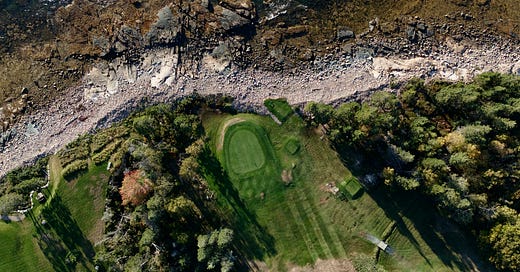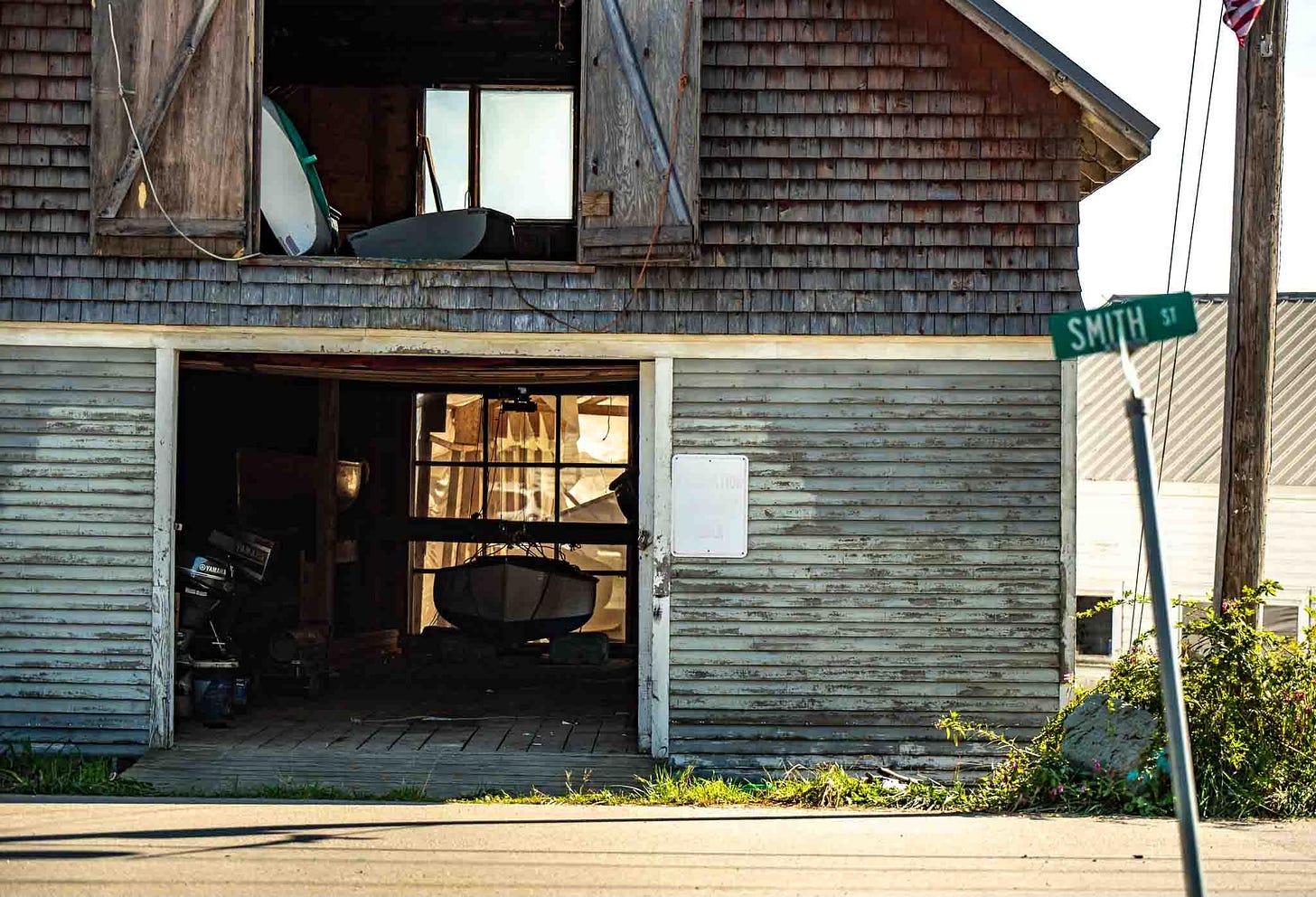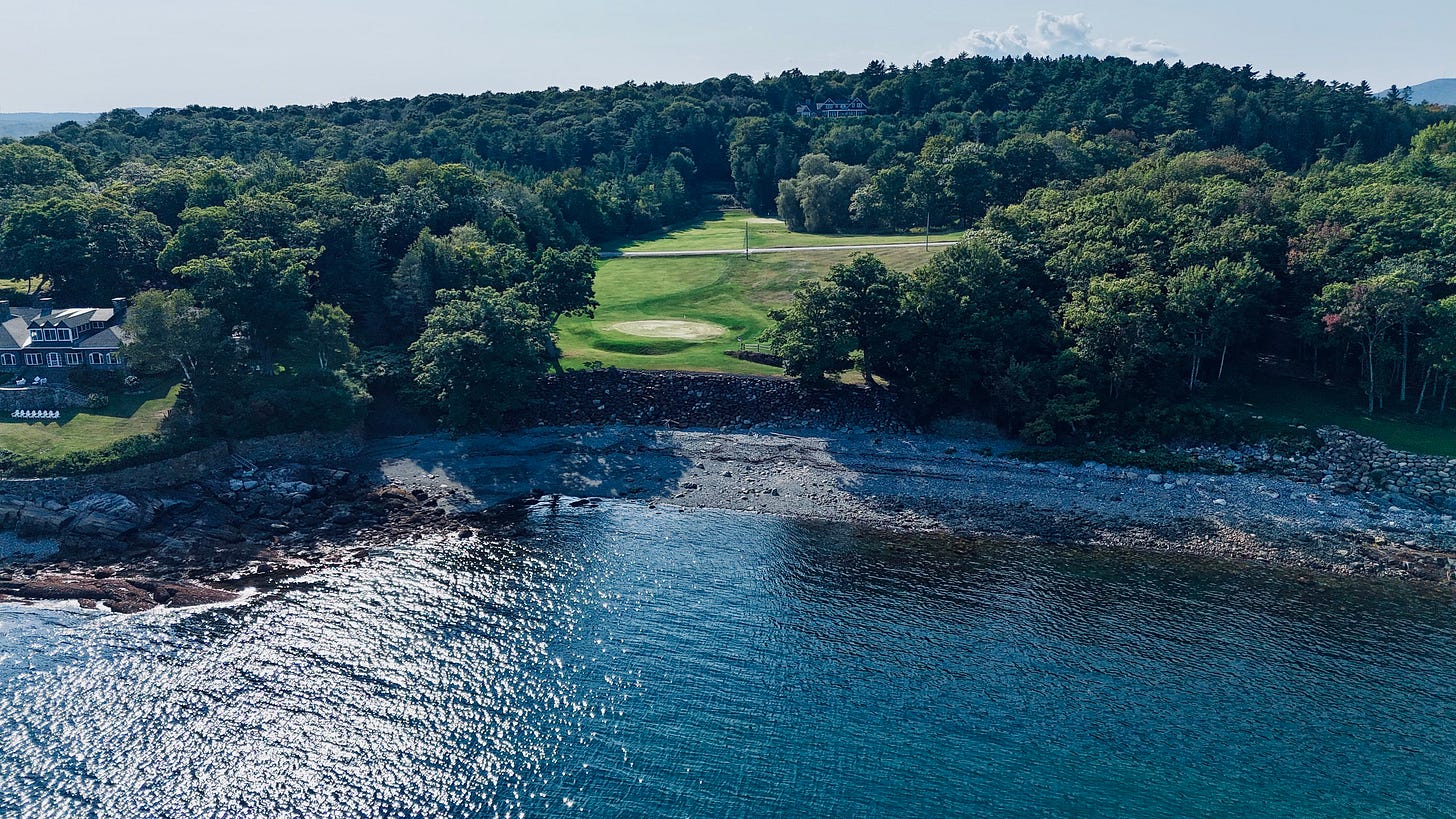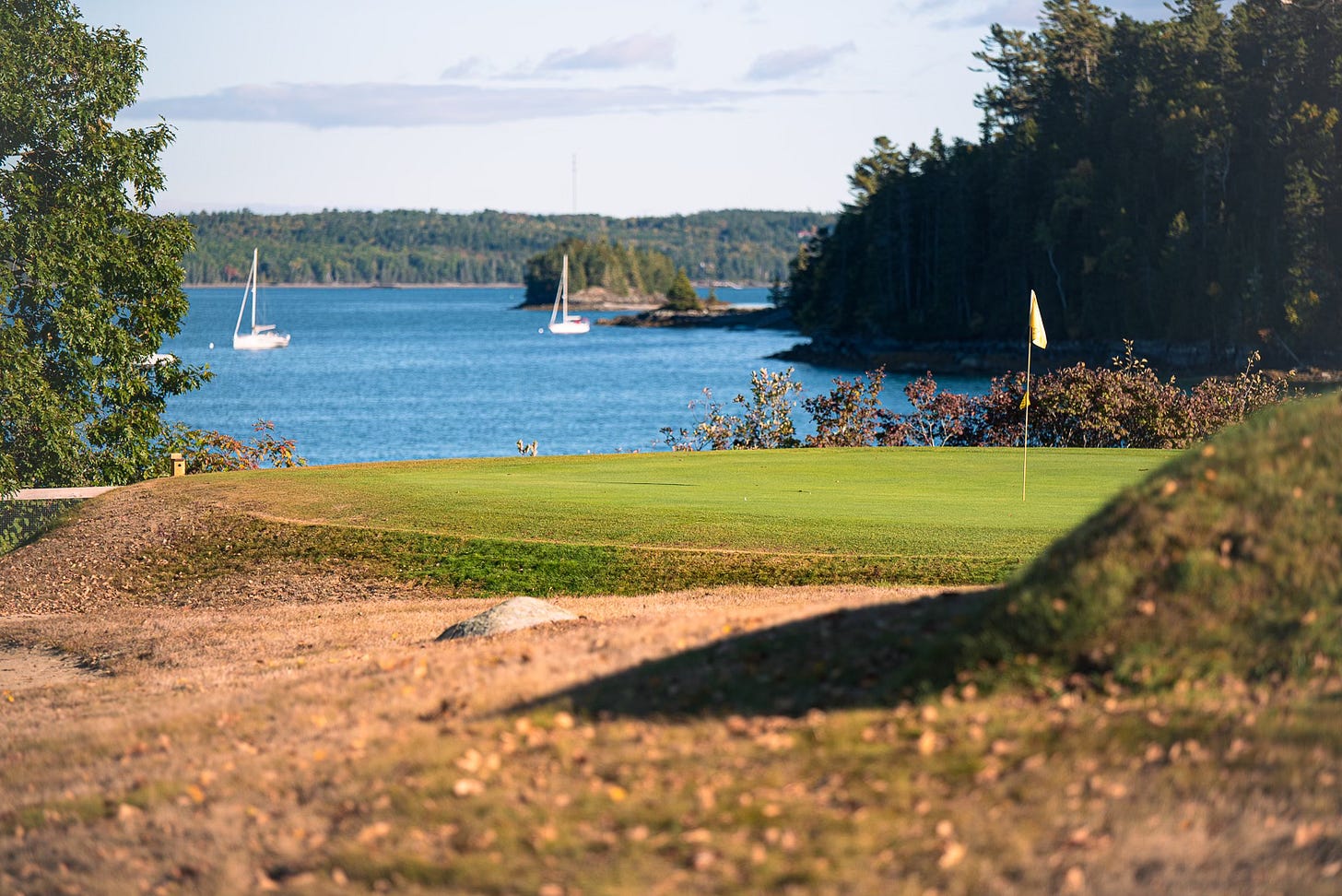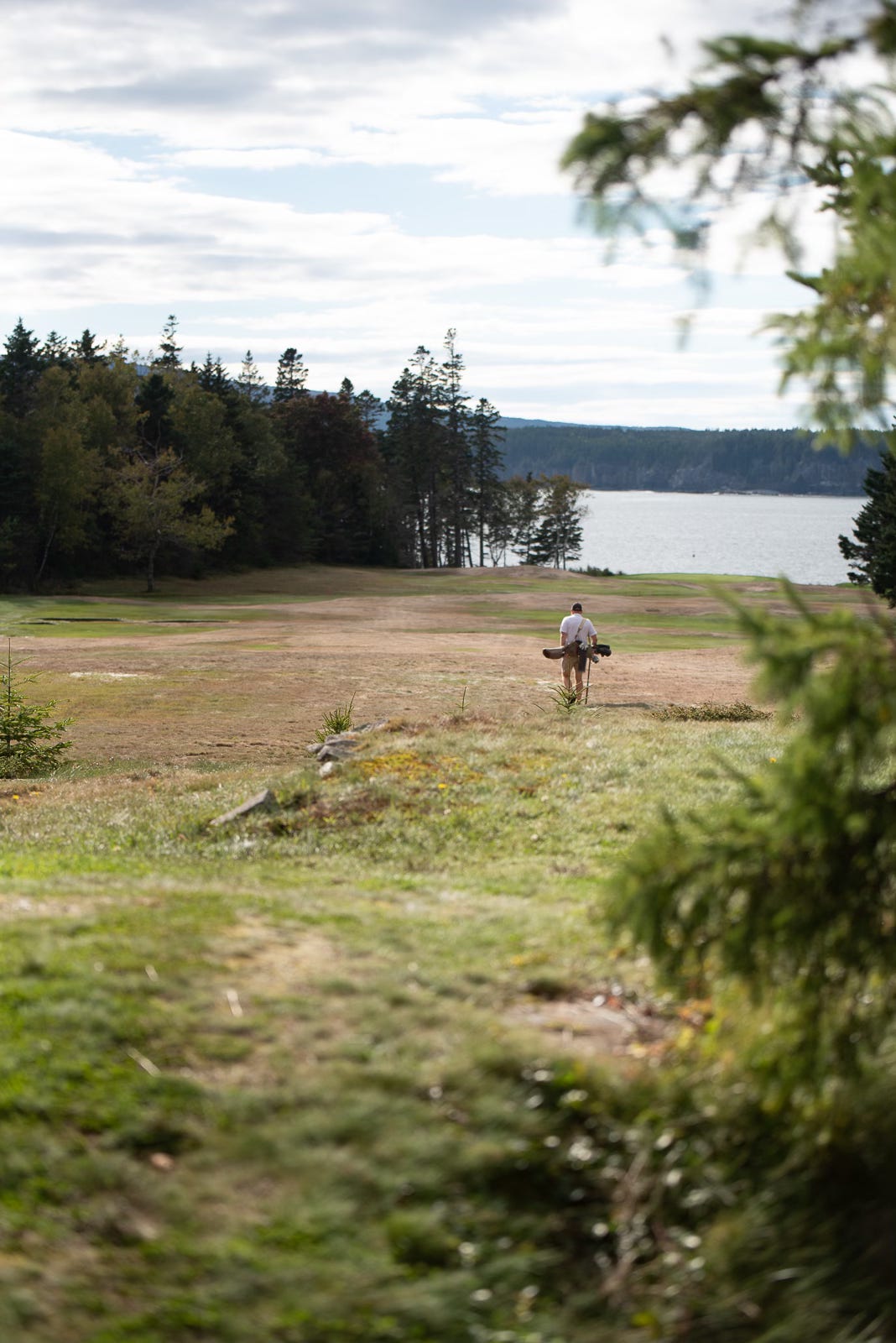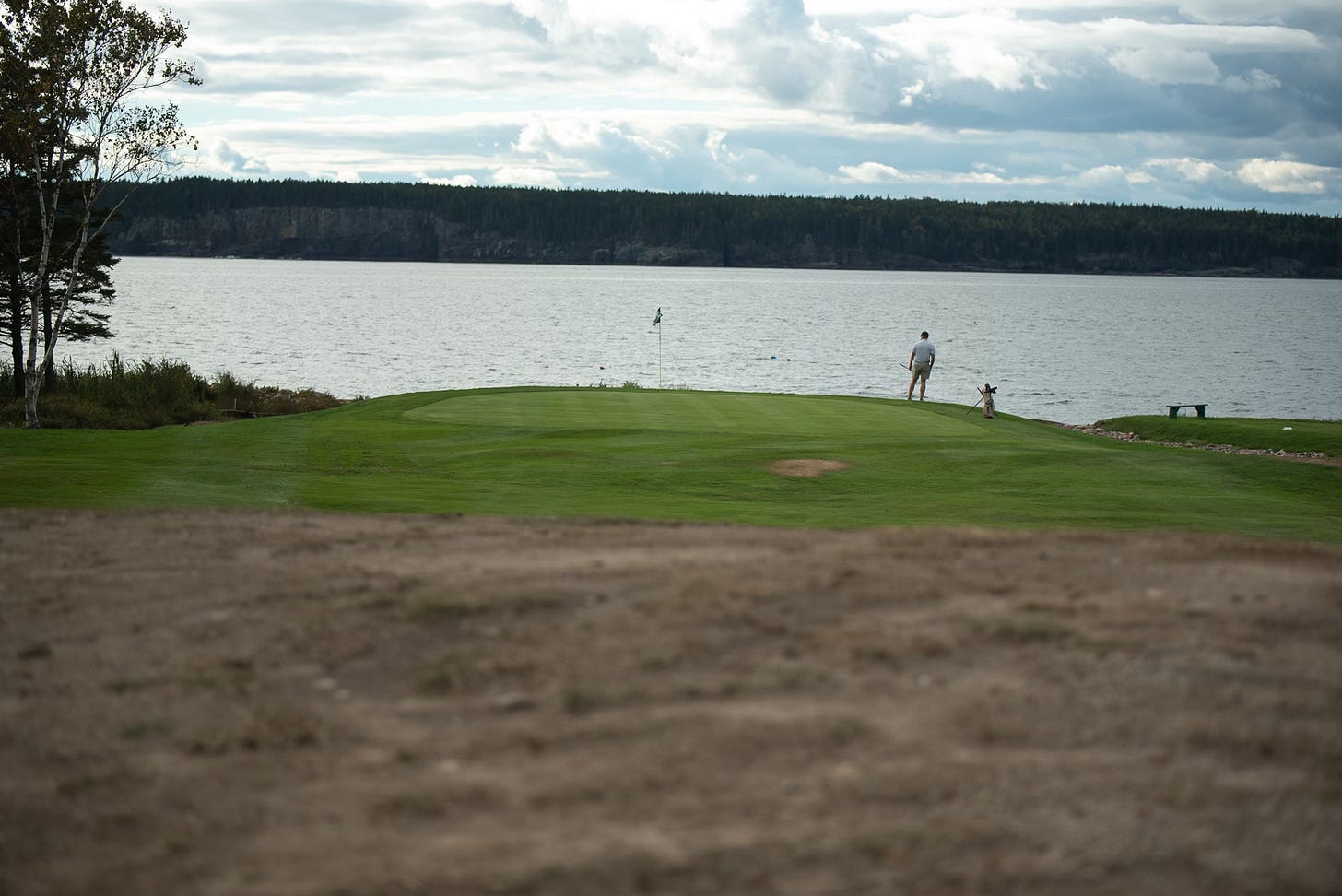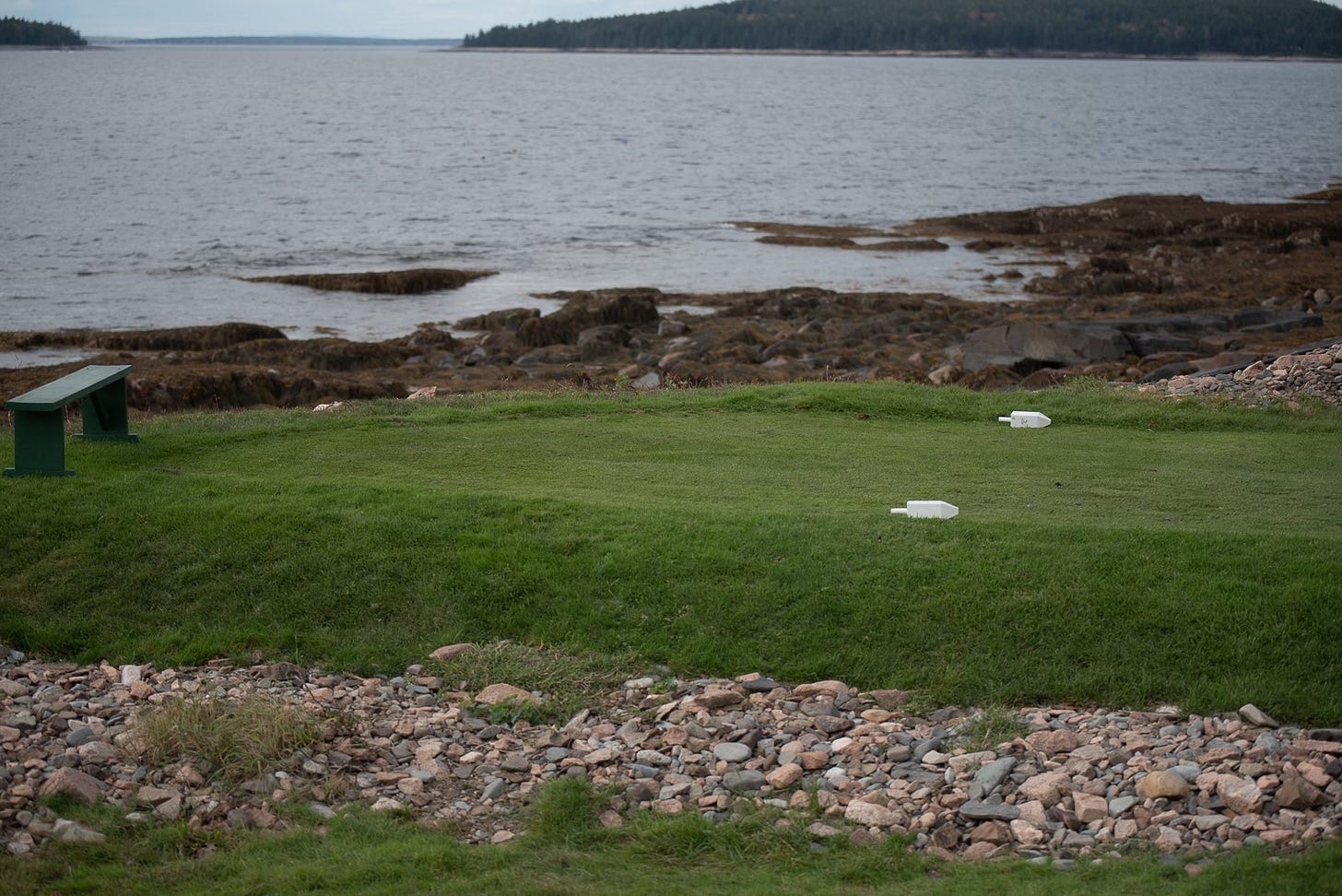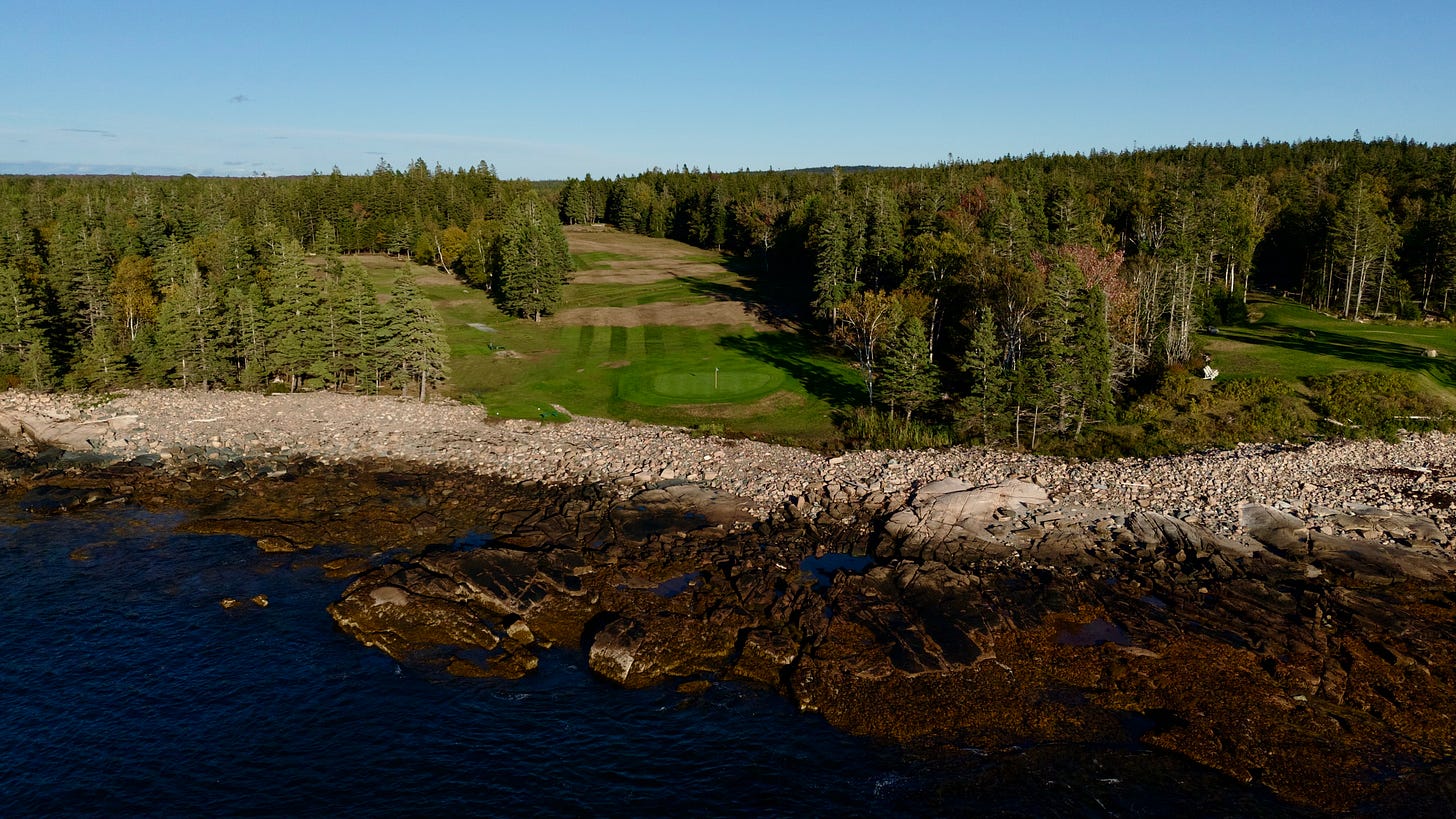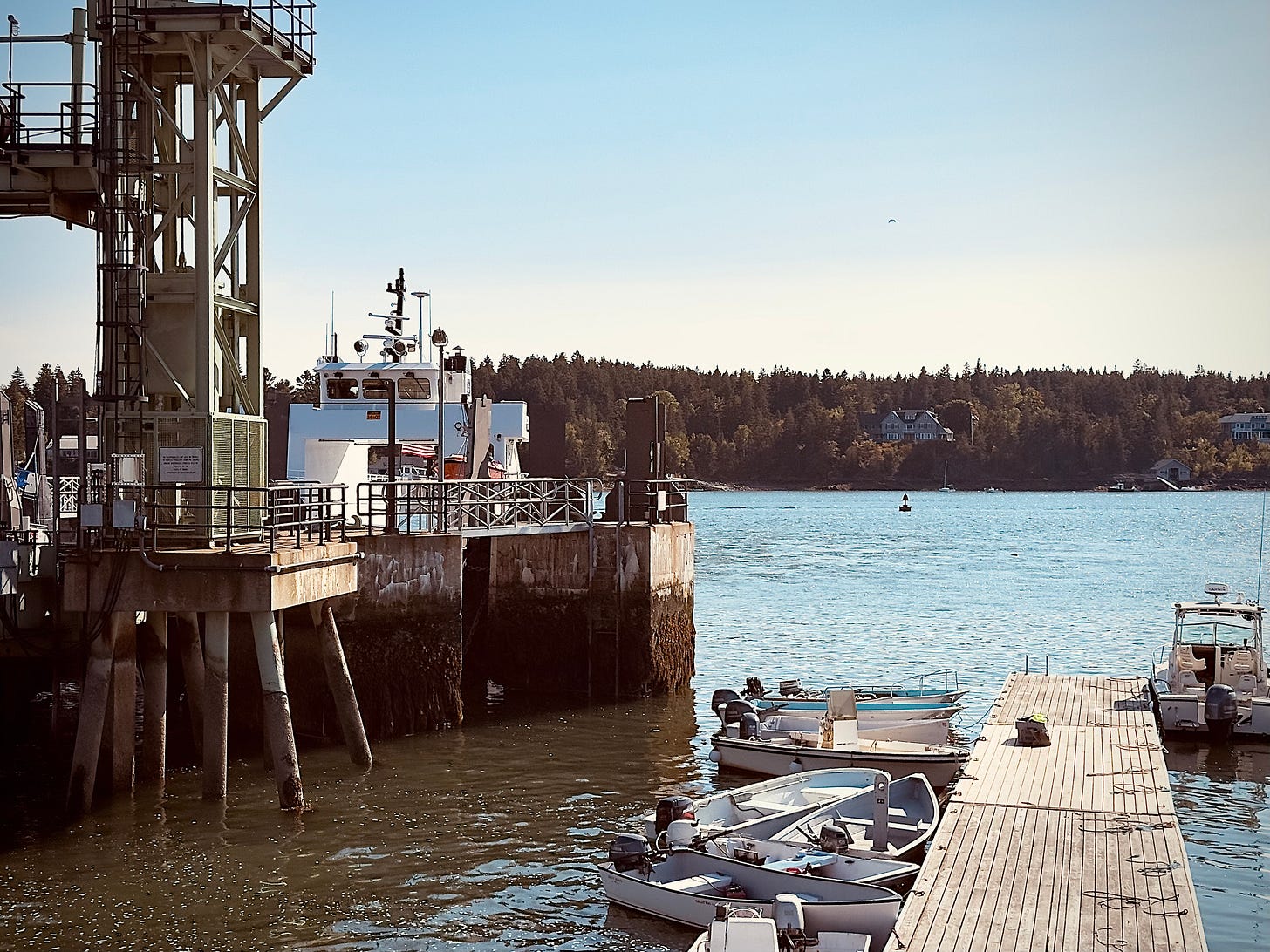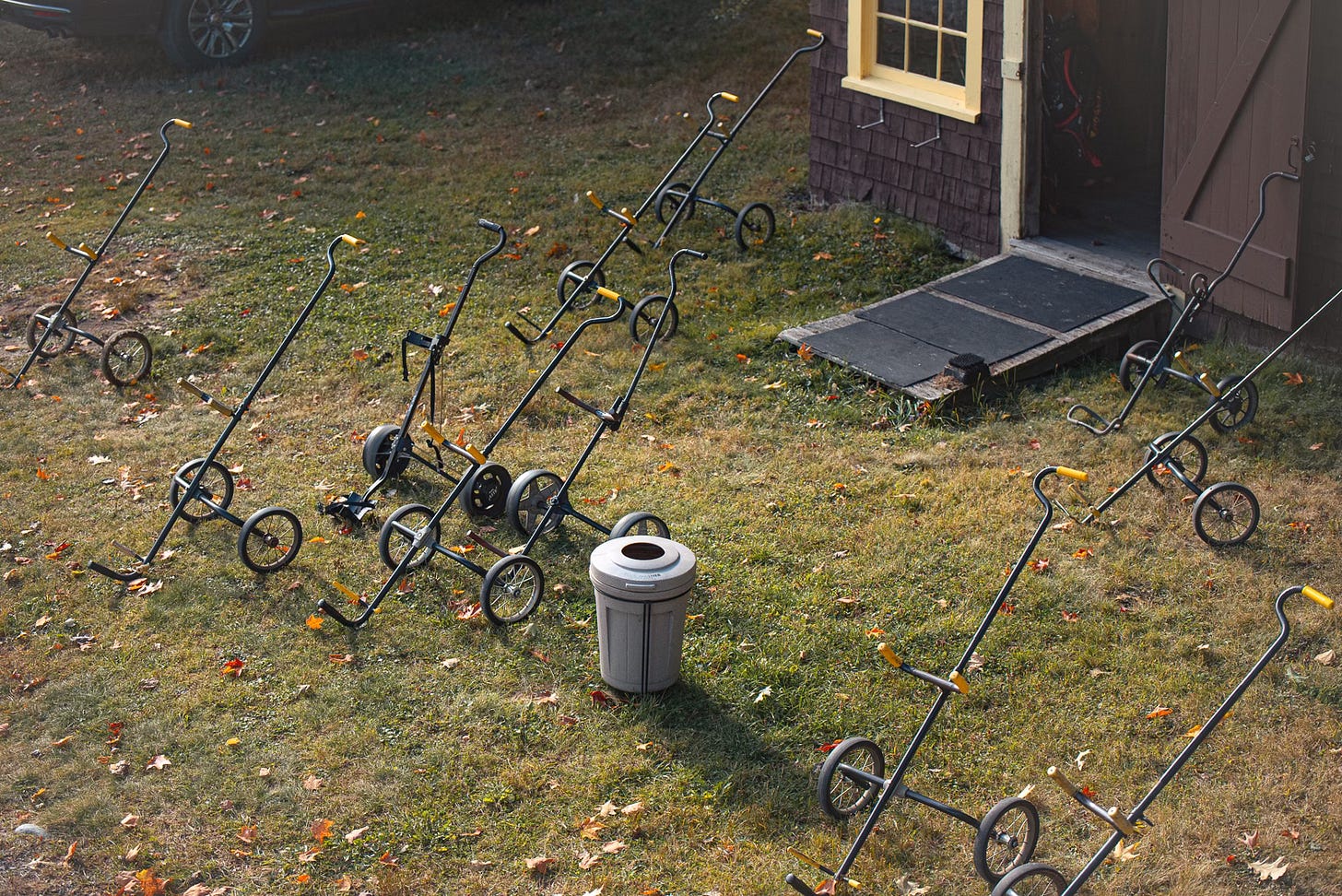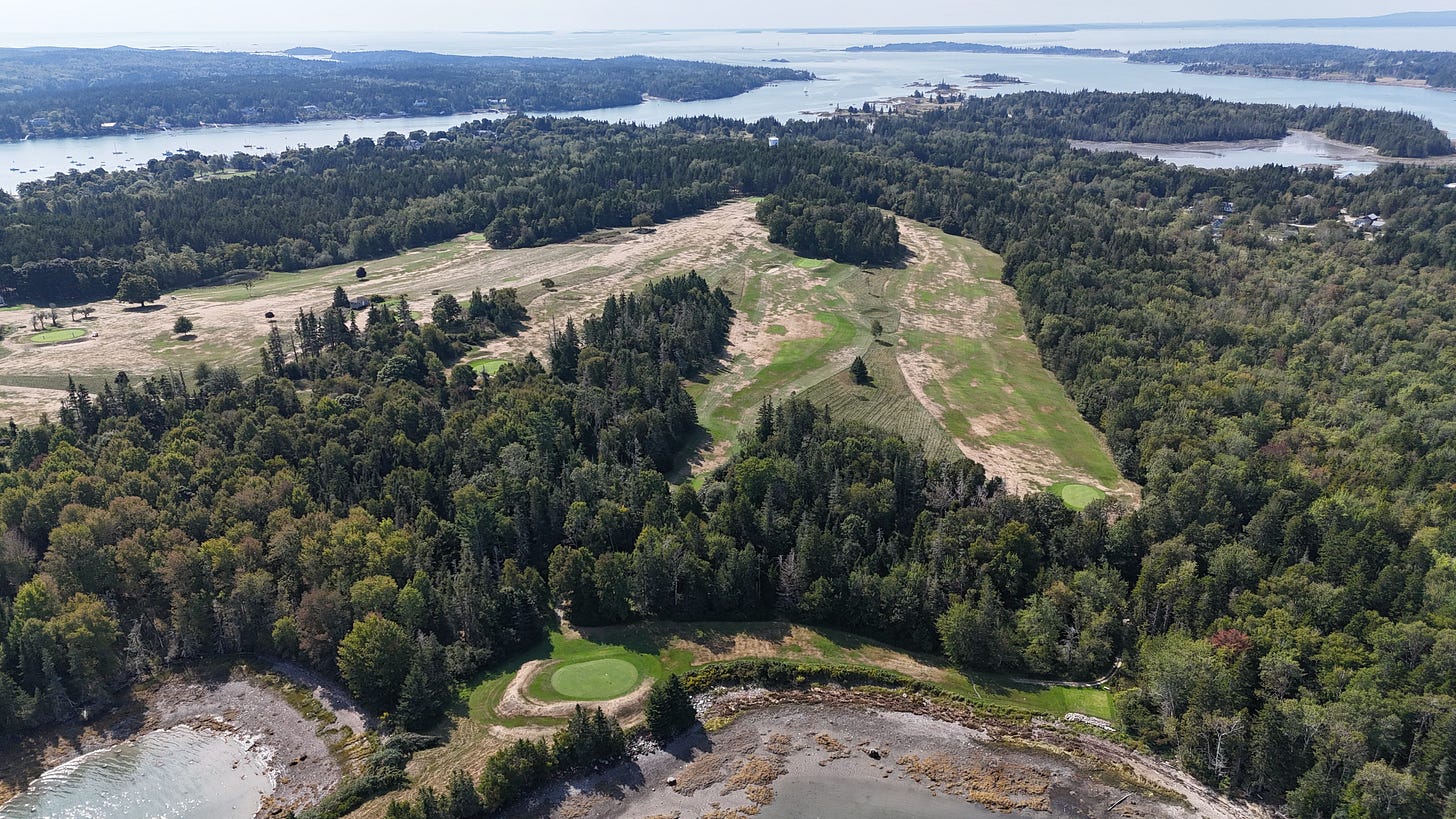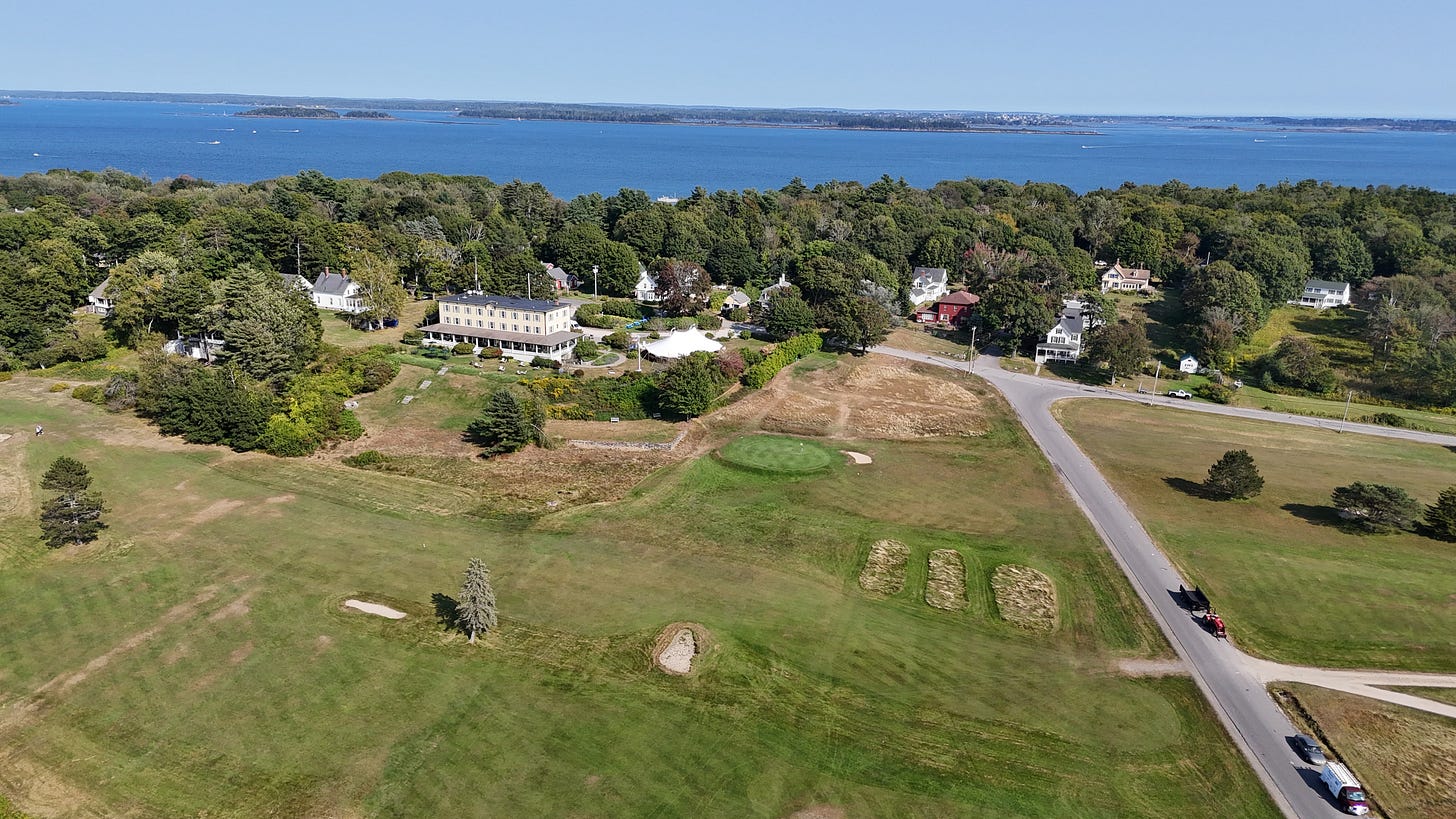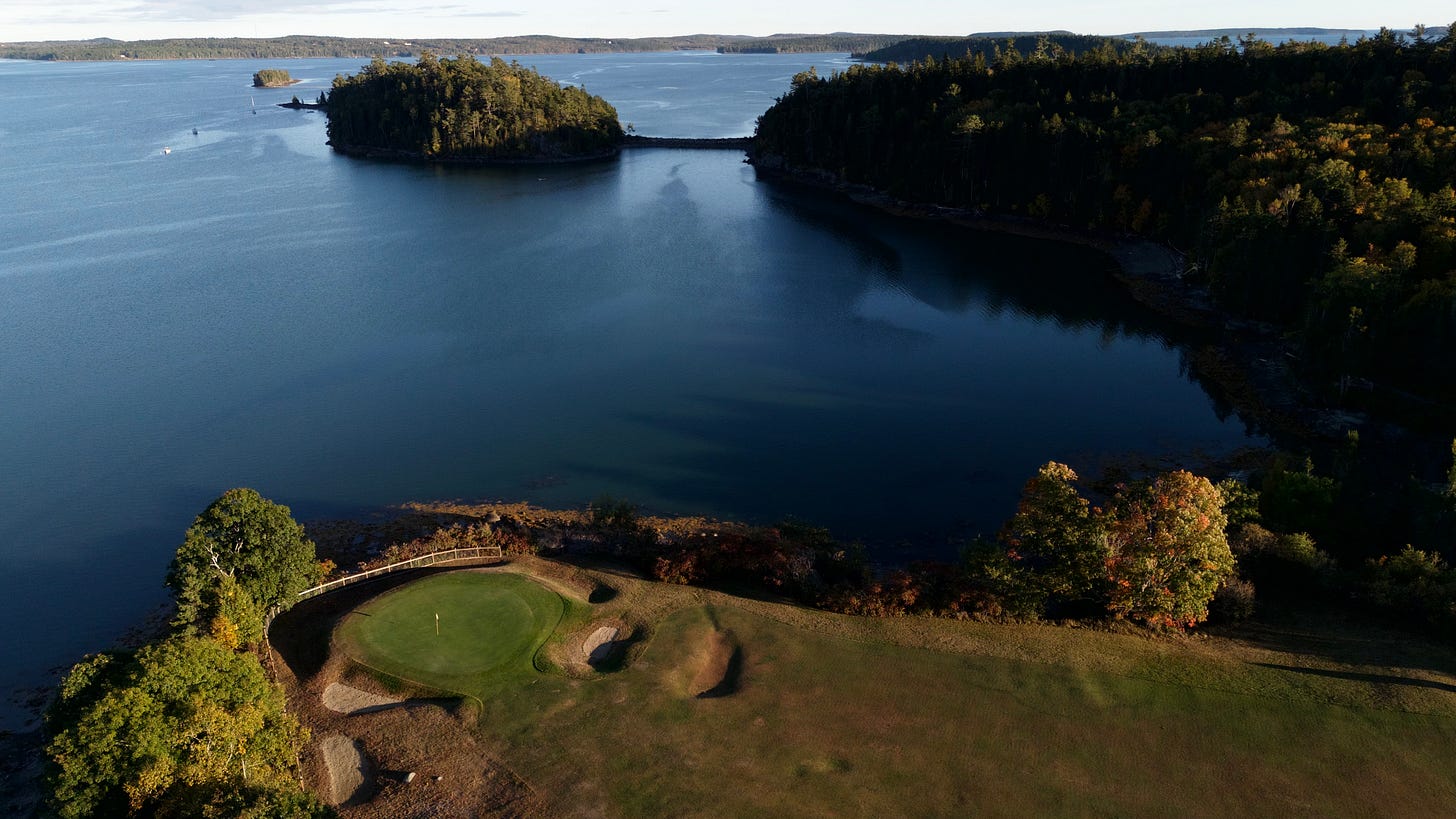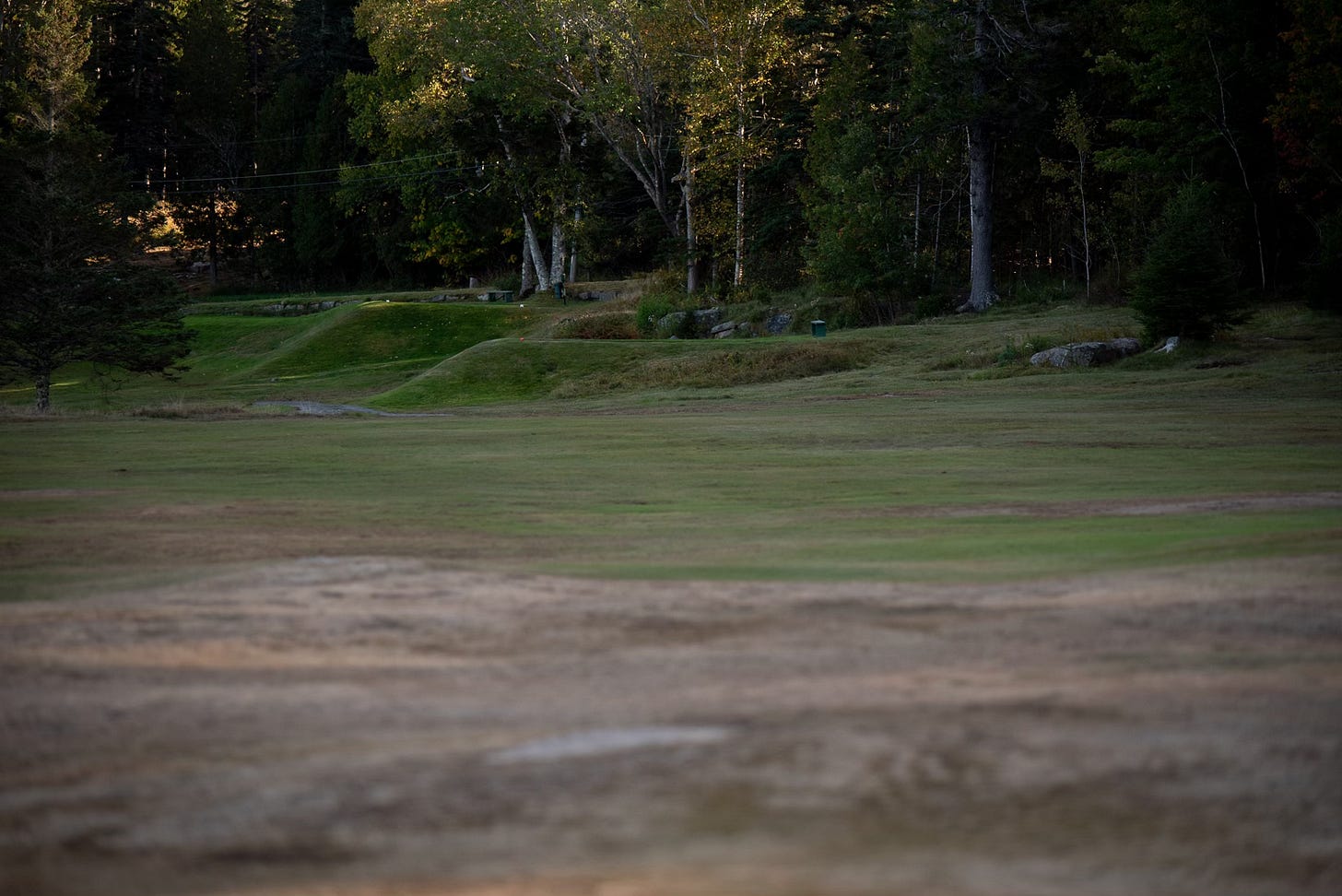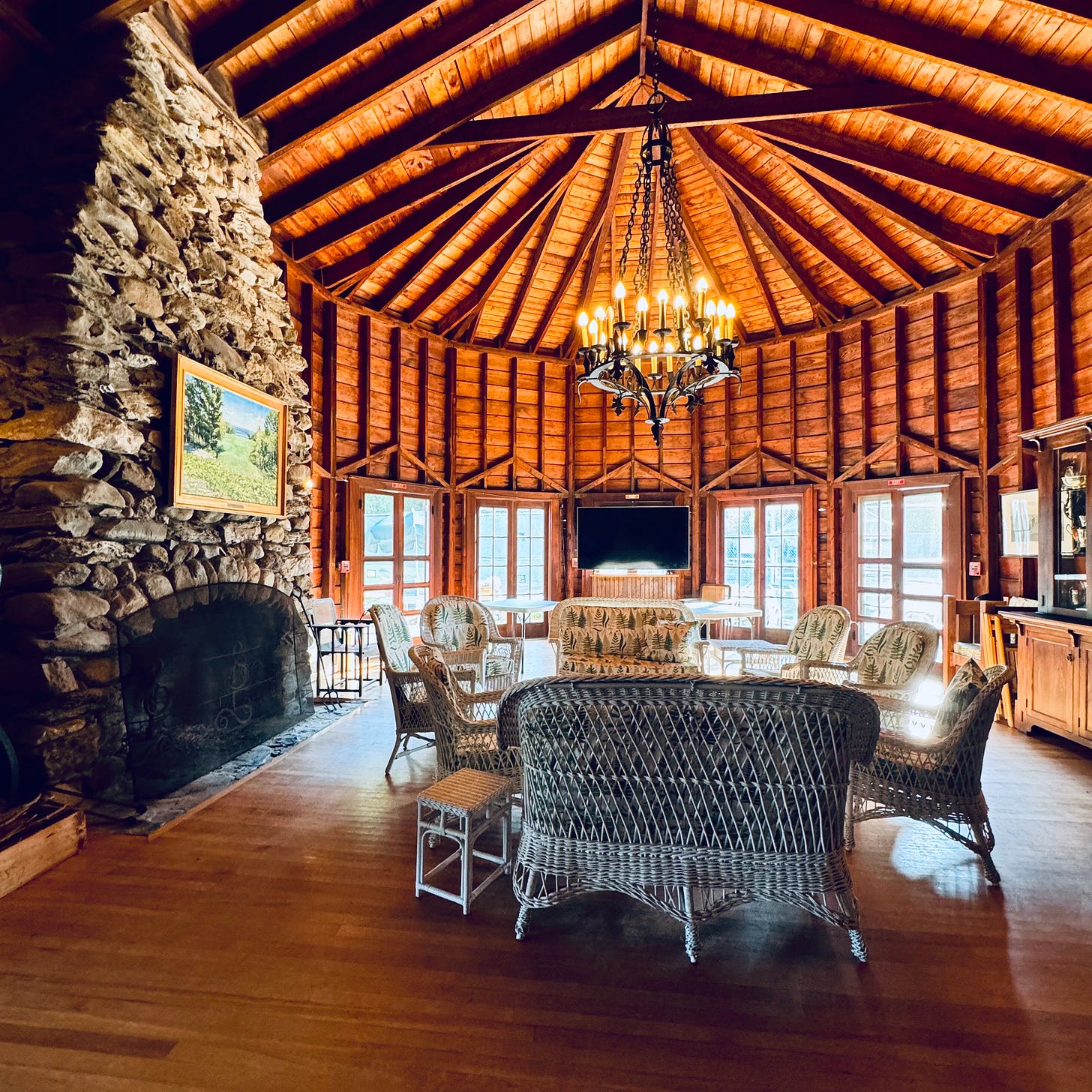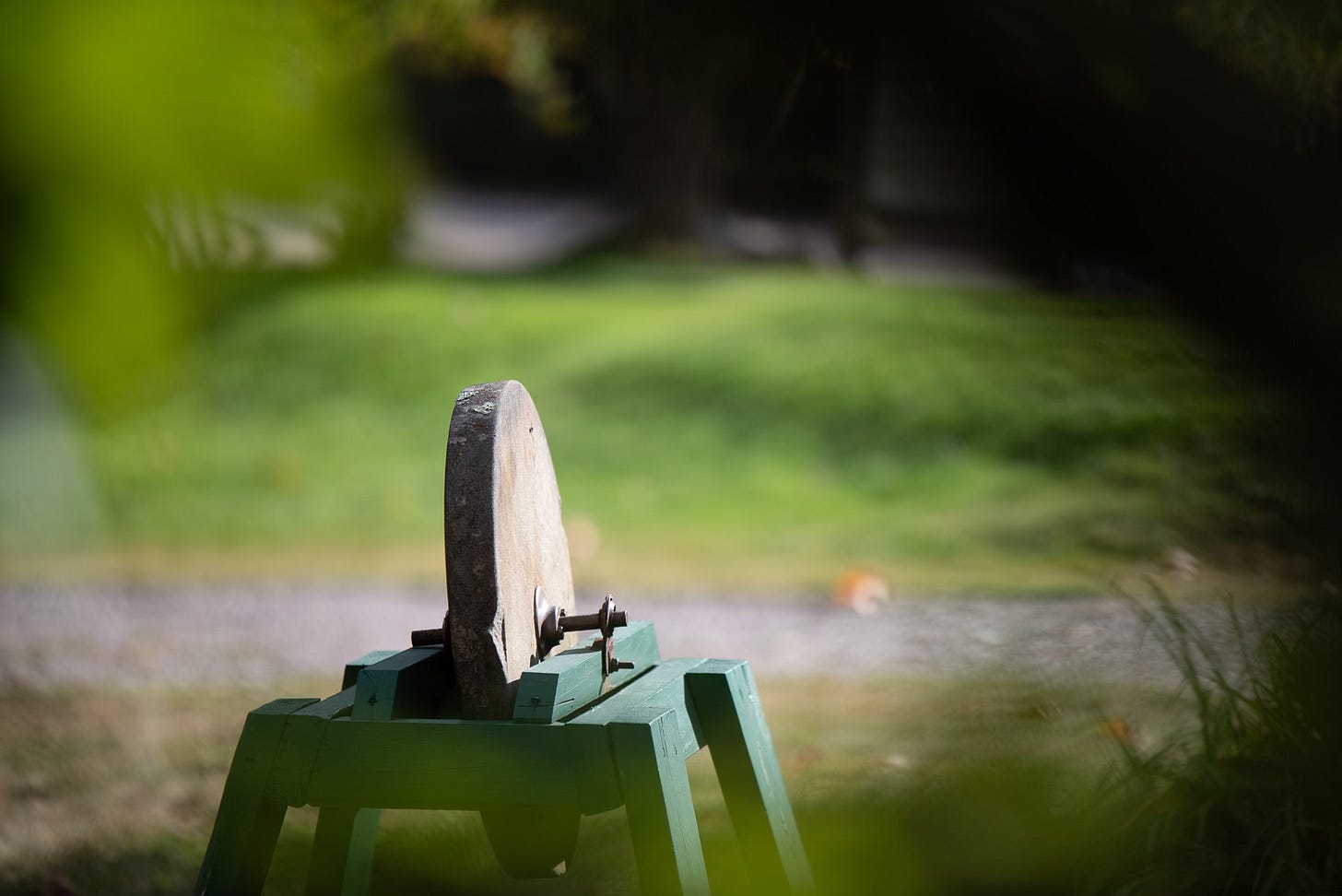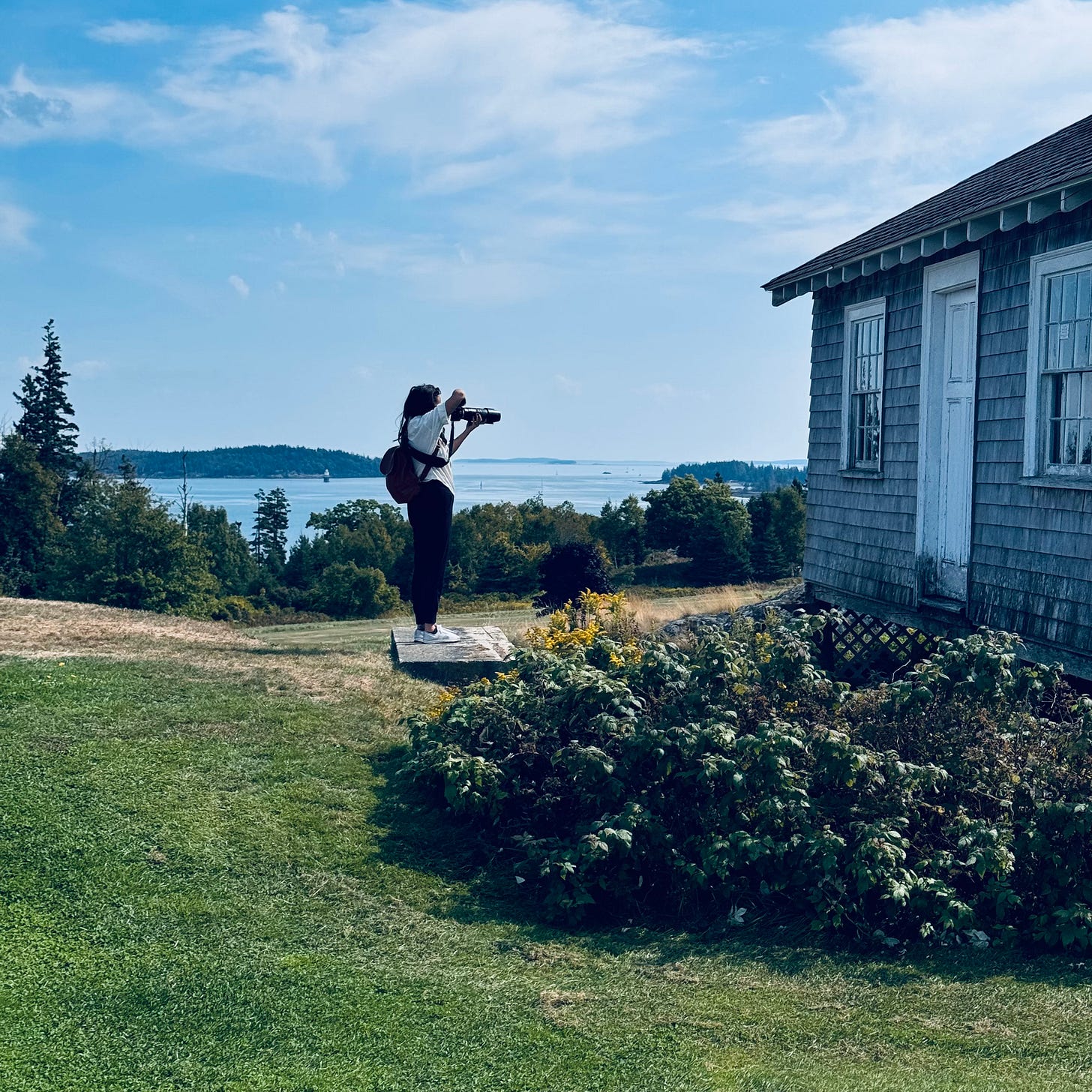The Waggle #22: Letters to a Fellow Golfer- The Nines of Maine
Hidden In Plain Sight: Grindstone Neck, Blink Bonnie, Megunticook, North Haven, and Great Cheabeague
“If you will stay close to nature, to its simplicity, to the small things hardly noticeable, those things can unexpectedly become great and immeasurable.” - Rainer Maria Rilke
(Selections from recent correspondence)
June 15, 2025
Dear X,
Thank you for your most recent letter. It was well received, and we were happy to read your thoughts about travel and of your adventures. As you point out, I agree that travel, in its many forms, can be restorative to the soul and offers one an opportunity to be out of one’s comfort zone- an idea that nearly every item in our lives seems to shout out in protest against. As I write that, it strikes me that this is one of the great lessons golf can hope to offer us as players- how to find comfort while being uncomfortable is a lesson good tournament players have always had to answer for themselves. "If you can fill the unforgiving minute with sixty seconds' worth of distance run", is something that Kipling would have us believe is something worth striving for and golf seems to excel at it in this regard. And, as we are in the weekend of the U.S. Open, you will see this very idea exemplified to some extreme degree. Despite being a fairly whiny group of professionals- let us never confuse golf with the Stanley Cup finals- the gravitas and undeniable difficulty of the U.S. Open always seem to separate the pretenders from the contenders naturally, at least for one week in June each year. Oakmont holds a special place in American golf as the most difficult of these tests- the OG Beast. Everything about the history and lore of the place, from the stories of Oakmont Swat games to the length of the rough to speed and contours of the greens, not so subtly says, “Come at me, bro.” But it works for this event somewhat splendidly, if perhaps slightly overstated. Golf devotees tend to want to see professionals suffer as they do on most weekends, and the U.S. Open typically provides that. It’s a specific and distinct test and an interesting one to watch. While most will focus on the severity of Oakmont as their lasting memory of the tournament, the presentation of the place also provides a distinctly ‘historical’ filter to the entire proceedings- it’s an old club, after all. I will say that Oakmont makes more sense to me without the trees, looking very much now like the inland links it was designed to be. Henry Fownes, the original owner and principal architect, took the time (and the trips) and great pains to be specifically inspired by the great courses of the United Kingdom and Ireland. This modern revision of Oakmont seems to try to recapture that idea while also trying to retain the title of the most challenging course in the world. Heading into the final day of the championship, it seems to be holding its own. The modern game of golf feels out of balance with the soul and spirit of the game from which it sprang, and only obvious and uncomfortable truths remain. Where does golf go from here, we ask from the hinterlands?
Returning to your letter, I will give you my immediate reaction to the second question you asked: I have been lucky enough to see a lot of great golf courses of late, but golf in Downeast Maine was what came to mind immediately. Our trips there last fall were some of the most surprising golf moments of the year, and it also shouldn’t surprise you that it was also the place that unexpectedly reminded me the most of playing golf in the United Kingdom. Like Oakmont, some of Maine’s most interesting courses are pre-Golden Age creations, still possessing the direct inspiration from distant links courses, from which many of their design features came. But they remain far off the radar of most.
Allow me a moment to explain.
New England is graced with a tremendous, layered golf culture, and the state of Maine flies under the radar a bit, dwarfed by Massachusetts’s murderers’ row of historical giants of courses. As a collective, it also doesn’t approach Rhode Island’s deep and confident roster. But Maine is a deceptively big state, and things can get hidden in the wilderness in this part of New England. And while most of the great golf in the region tends to be clustered in the more populous parts or around cities, there are remote pockets in the Northeast with surprisingly distinctive, fun, and wild golf to be found. The Maine golf rankings are deceptive and tend to, seemingly by design, steer you away from the most exciting golf in the state and funnel you instead to more modern, less nuanced alternatives with steep green fees. I read once that golf clubs in the UK, looking to attract more American tourists, realized that all they had to do was increase greens fees, and that seemed to do the trick, as our countrymen famously equate high greens fees with a “good” golf experience. Why do we do this to ourselves?
After spending some time in Maine this past fall, the notebook I had kept for those particular trips just had an underlined “Wow” as an article of reflection. I just ran across it in the pile of notebooks that I keep for golf experiences that are off the beaten path. In Maine, memorable trips can be found for the discerning player willing to travel and perhaps be willing to embrace a certain sense of adventure and humor when searching out golf in this part of the world. Outside of Herbert Leeds (of Myopia Hunt Club fame), the Kebo Valley Club, you must dig to find any real information about courses that don’t appear prominently in the rankings. It all feels slightly elusive. The desire to explore here was first piqued by listening to a famous golf architect tell stories on a podcast about golf in Downeast Maine and repeatedly stopping himself from saying “too much” because he didn’t want the place overrun with tourists. If you’re like me, when you hear things like that, you sit up a little bit and look for those notebooks and create a plan. And for good reason. But there isn’t a ton of information available at first glance. The ocean and coastlines are the attraction here, and the farther up the coast you go in Maine, the higher the likelihood of finding golf with a distinctive and old-fashioned character. Golf design in Scotland is a hymn to nature’s raw hand, the courses sculpted by wind, time, and tradition. In New England, without heavy earthmoving equipment, the land dictated, and the early golf architects in America merely listened to that land. This lesson remains quite evident in the quality of the coastal golf of Maine, which is generally what I might call ‘classical’. You can happily ride ferries into the expanse of the ocean, exploring largely quiet golf courses, hitting running shots, and listening to the murmurs of golf history that seems to extend across the Atlantic with barely having to make a tee time.
The names of these courses alone inspire a closer look.
Grindstone Neck, designed by Alex Findlay in 1891 and perched on the Schoodic Peninsula across from Bar Harbor, is a nine-hole walk where every hole looks upon Frenchman Bay’s pink granite shores. Blink Bonnie, in Sorrento, a 1916 gift from Dr. James L. Gamble, offers Flanders Bay views from elevated greens and is a time capsule—tight, short, with sloping greens that demand a delicate touch. Yet, its shared fairways and honor-system fees ($18 for twilight) speak to a community spirit found most often in the remote parts of Scotland. I have spoken at length about North Haven GC, a nine-hole Wayne Stiles (click here) , situated on North Haven Island, an hour journey from Rockport by ferry, where the sea’s breath shapes every shot, though limits its audience. It plays and feels like a secret you alone have uncovered, and I can’t recommend it enough. The Megunticook Golf Club, a one-off design by Warren H. Manning built in 1912, sits on Beachamp Point and skirts the edge of Penobscot Bay. It’s the oldest surviving private club in Maine and has a cluster of wild and rocky blind par 3’s, seaside charm, and one of the great clubhouses in New England, and on the list the National Register of Historic Places. I would happily play there all summer long if ever the occasion called for it (shout out to Dr. Nick, out there with his hickories), Great Chebeague Golf Club, on Cheabeague Island in Casco Bay, laid out in the 1920s by local residents with advice from Stiles, also requires a ferry to arrive and retains Golden Age period quirks: narrow fairways, small greens, and a road bisecting four holes, requiring local rules like a mandatory 160-yard layup on the 266-yard par-4 first to avoid parked cars. Its fast, bumpy fairways and scruffy charm, born of harsh winters and minimal staff, feel closer to Scotland’s rugged minimalism than Maine’s other polished and pricier layouts. Its signature 7th, a 140-yard par-3, tees off from a dock across an inlet to a tiny green perched among trees, a hole Stiles called “undoubtedly the finest water hole on the Atlantic Coast.”
These courses all hug the coast- their fairways fragrant with salt air, much like Scotland’s links, where the sea is both muse and menace, and its crashing waves and persistent wind constant hecklers. Maine’s courses often weave with the sea subtly, with glimpses through pines or across inlets, rather than Scotland’s unrelenting coastal exposure. Its quiet coves and pine-fringed fairways offer an undiscovered summer golfing idyll, a New England cousin to Scotland’s windswept shrines. Can you think of anywhere else in the United States like this? Scotland’s courses are the game’s ancient texts, their designs etched by masters, and their ocean proximity almost unmatched in drama. Yet Maine’s quaintness and gentle charm—Grindstone’s bay views, Blink Bonnie’s honor box, North Haven’s adventure, Megunticook’s rocky parapets, and Chebeague’s 7th-hole adventure—make it a destination for those who seek beauty without requiring a great pilgrimage. Both coasts call, but Maine whispers where Scotland roars. And it surprised me to have it all of it to myself. You can get lost out here and it remains one of the most unique and least heralded golf trips you can find.
Throw the rankings out, and bring wooden clubs if you can. Feel free to borrow mine.
Happy Father’s Day,
AJ
P.S.- I have taken the trouble to enclose some pictures that you might enjoy.

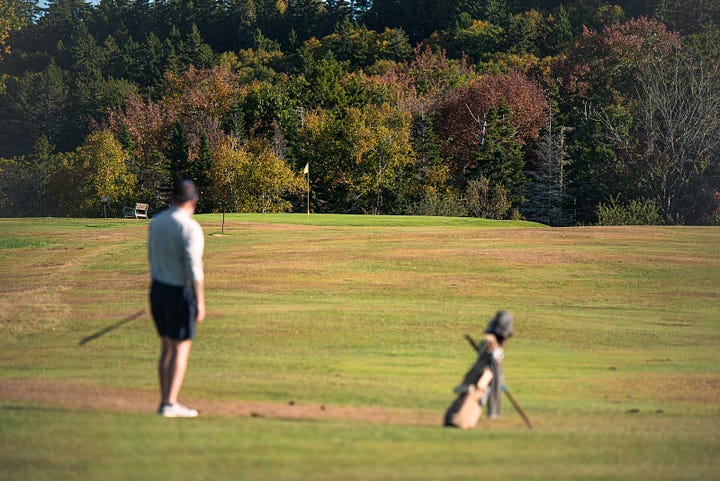
*******

